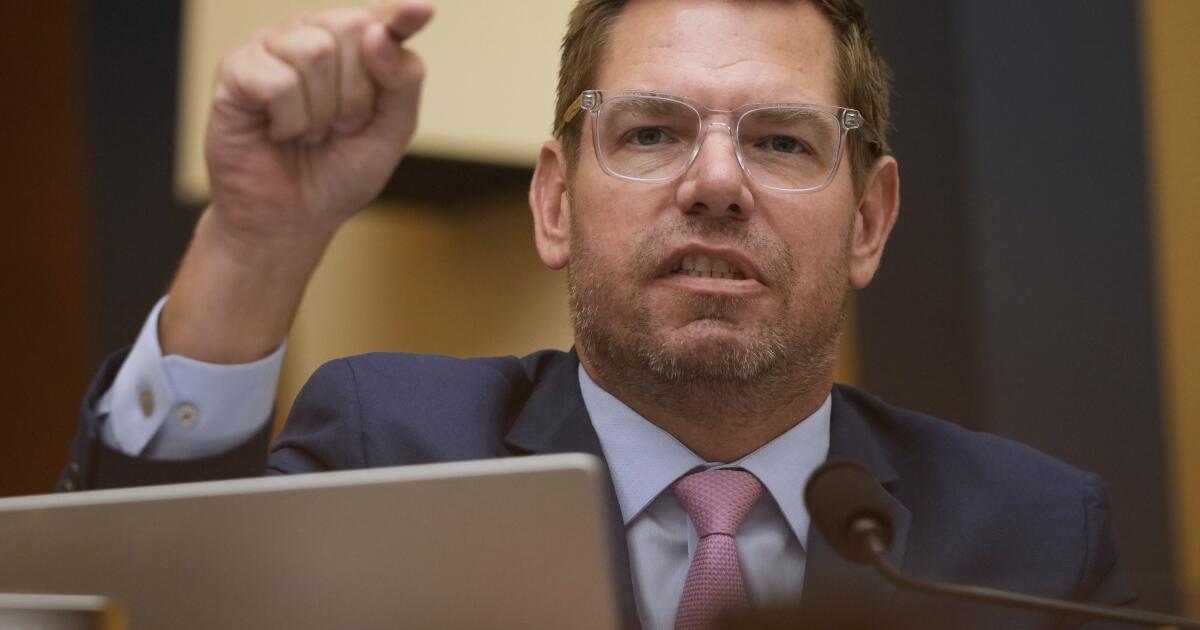Lifestyle
Ariana DeBose's 'Hamilton' Costar Defends Her Talent After Award Show Jab

Ariana DeBose‘s former “Hamilton” co-star is leaping to her defense … after a Critics Choice Awards joke at her expense left her visibly insulted.
Christopher Jackson, who played George Washington alongside Ariana in the musical back in 2015, gushes over the “world-class artist” … telling TMZ she represents every facet of tremendous skill and talent to the highest level.
He’s imploring folks to find another artist out there who has delivered performances with Ariana’s sheer skill — basically, he’s yet to see her do anything but shine.
Christopher’s also reminding us the job of a Broadway star ain’t easy, so much so they have to always consider the safe route — but Ariana’s got it all locked down cause she’s a triple threat in every sense of the word.
He blasts the “lazy hack-ass” writers for the joke, but Victoria Theodore — musical director for ‘The Donna Summer Musical’ in which Ariana starred — is taking a direct shot at Bella Ramsey for delivering the quip.
She says Bella’s scripted line was rude, and lumping Ariana in with “actors who think they can sing” was completely uncalled for.
Victoria also noted how challenging it is to sing live on Broadway while dancing and acting, but despite that … she says it’s no sweat for Ariana, because she can perform all aspects of musical theatre brilliantly.
The CW
Ariana’s immediate facial reaction to the joke has gone viral … and she later admitted on social media, she genuinely didn’t find it funny.
Maximizing the awkwardness was the fact Bella was standing next to Anthony Ramos … another one of Ariana’s “Hamilton” costars.
She clearly has loads of people in her corner, though, so it’s safe to say the crack doesn’t reflect how most of Hollywood feels.

Lifestyle
Mel Robbins was in a ‘toxic’ place. She’s now sharing the tools that got her out of it. : Wild Card with Rachel Martin

A note from Wild Card host Rachel Martin: I discovered Mel Robbins the way a lot of people do. Someone sent me a link to an episode of her podcast, saying, ‘You gotta listen to this.’ In my case, it was my sister and the episode she sent me was about fitness and menopause. It’s obviously a huge topic but this is the thing about Mel Robbins: it doesn’t matter if it’s about exercise, ambition, relationships or self esteem. She will synthesize a complex topic in a way that feels both obvious and revelatory at the same time and then leave her listeners with a handful of small, manageable actions to make positive change.
Her latest book has become a global bestseller. It’s called “The Let Them Theory.”
Lifestyle
Guess Who This Blue-Eyed Kiddo Turned Into!

Guess Who This
Blue-Eyed Kiddo
Turned Into!
Published
Before this big blue-eyed boy turned into a singer and actor, he was just chillin’ with his two actor siblings, and left Kansas at 10 years old … to head off to Cali!
When he was 19, he kicked off his singer career as one of the members of pop band “Big Time Rush.”
“Make it count, play it straight. Don’t look back, don’t hesitate.”
Can you guess who he is?
Lifestyle
Filmmaker Jafar Panahi is sentenced again in Iran as Hollywood’s awards season starts

Alongside interpreter Sheida Dayani, filmmaker Jafar Panahi accepts the award for the best original screenplay at the Gotham Awards in New York on Monday for his film It Was Just an Accident.
Mike Coppola/Getty Images for The Gotham Film & Media Institute
hide caption
toggle caption
Mike Coppola/Getty Images for The Gotham Film & Media Institute
The start of Hollywood’s awards season has been marked by highs and lows for Iranian filmmaker Jafar Panahi.
On Monday night, the writer and director was present when his film It Was Just an Accident won big at New York’s Gotham Awards, which celebrate independent movies. Hours earlier, his lawyer shared that Panahi was sentenced in absentia to a year in prison in Iran.
According to his lawyer, Mostafa Nili, who posted about the sentence on X and shared the news with Agence France-Presse, the sentence also includes a two-year ban on travel from Iran and a prohibition of any association with political groups, on charges of “propaganda activities against the system.” Nili added that Panahi’s legal team plans to appeal the ruling.
Last month, Panahi toured the U.S. for the first time to promote It Was Just An Accident, which won the Palme d’Or at the Cannes Film Festival in May. The film follows a group of ex-prisoners in Iran who consider seeking revenge on a man they believe to be their former jailer. The international co-production from Iran, France and Luxembourg is France’s submission for best international feature for the Oscars. It Was Just An Accident was shot in secret, a common practice for Iranian filmmakers.


At the Gotham Awards, which many consider to be the starting point for awards season, Panahi picked up three major prizes, including best international feature and best director. In his acceptance speech for best original screenplay, he dedicated the award to “filmmakers who keep the camera rolling in silence, without support, and at times risking everything they have, only with their faith in truth and humanity.”
“I hope that this dedication would be considered a small tribute,” he added, through an interpreter, “to all filmmakers who have been deprived of the right to see and to be seen, but continue to create and to exist.”
Panahi’s sentencing was not his first. The director was previously arrested in Iran in 2010, sparking public outcry from filmmaking giants such as Martin Scorsese, who denounced the ruling at Cannes that year. Although his sentence in 2010 included a 20-year ban on filmmaking, Panahi continued to make films in secret, including two documentaries, This Is Not a Film (2011) and Taxi (2015), the first of which was smuggled out of Iran on a USB stick.
In 2022, he was again arrested after seeking information on the charges against fellow Iranian filmmaker Mohammad Rasoulof. He was detained for seven months and released in 2023 after a hunger strike.
Panahi is one of the most acclaimed filmmakers to come out of Iran in recent decades. He is one of only four directors to win the highest competitive prizes at the “big three” film festivals — at Cannes, Venice and Berlin — and is especially celebrated for his defiance of the Iranian government’s censorship. Despite his multiple arrests, Panahi has repeatedly stated that he can’t see himself leaving Iran for good, and he remains committed to making his films there and nurturing the next generation of filmmakers in his home country.
-

 News2 days ago
News2 days agoTrump threatens strikes on any country he claims makes drugs for US
-

 Politics2 days ago
Politics2 days agoTrump rips Somali community as federal agents reportedly eye Minnesota enforcement sweep
-

 World2 days ago
World2 days agoHonduras election council member accuses colleague of ‘intimidation’
-

 Technology1 week ago
Technology1 week agoNew scam sends fake Microsoft 365 login pages
-

 Politics7 days ago
Politics7 days agoRep. Swalwell’s suit alleges abuse of power, adds to scrutiny of Trump official’s mortgage probes
-

 Business1 week ago
Business1 week agoStruggling Six Flags names new CEO. What does that mean for Knott’s and Magic Mountain?
-

 Ohio1 week ago
Ohio1 week agoSnow set to surge across Northeast Ohio, threatening Thanksgiving travel
-

 News1 week ago
News1 week ago2 National Guard members wounded in ‘targeted’ attack in D.C., authorities say





















